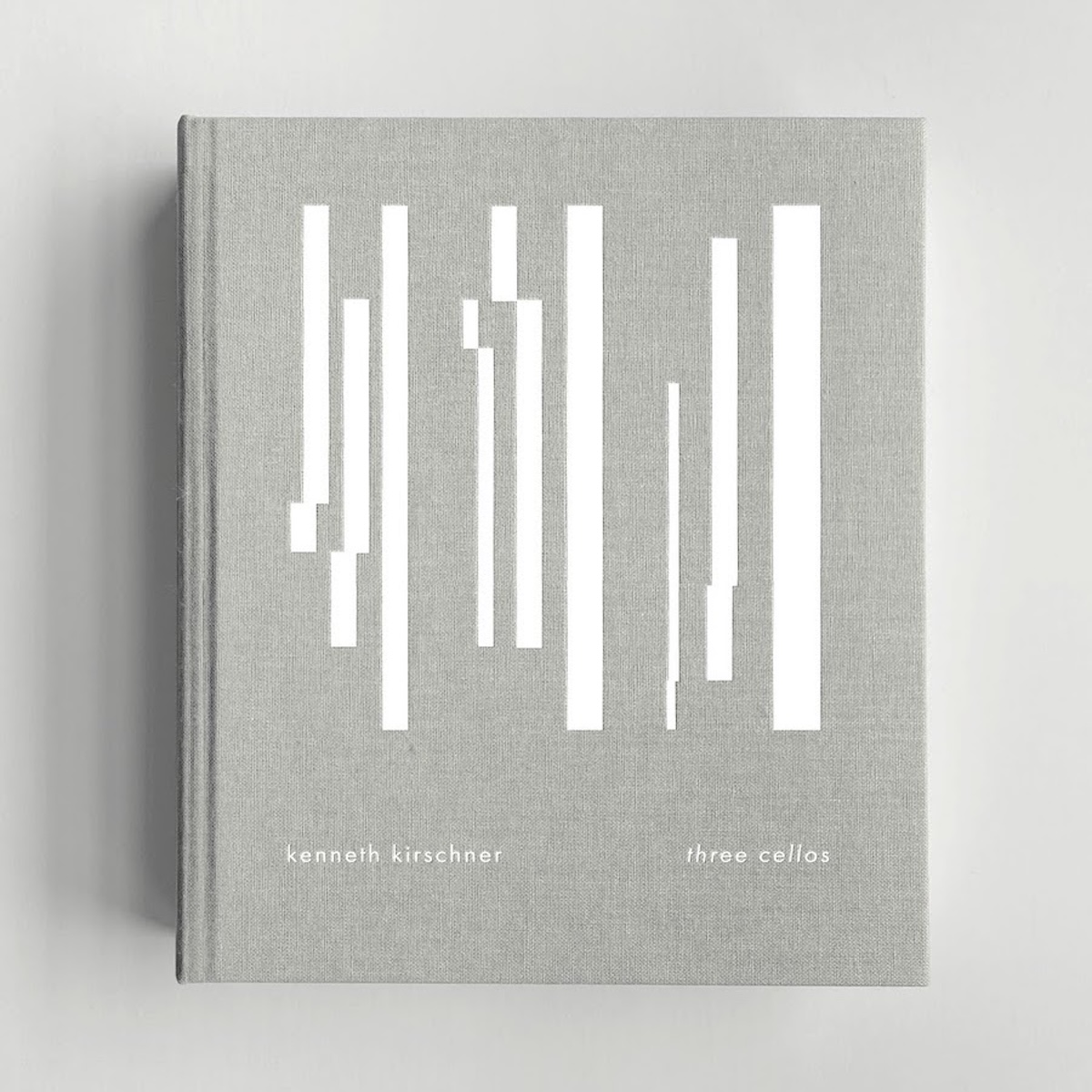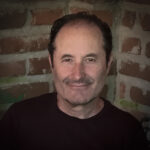Kenneth Kirschner
«… for me, composing is really just a heightened form of listening.”
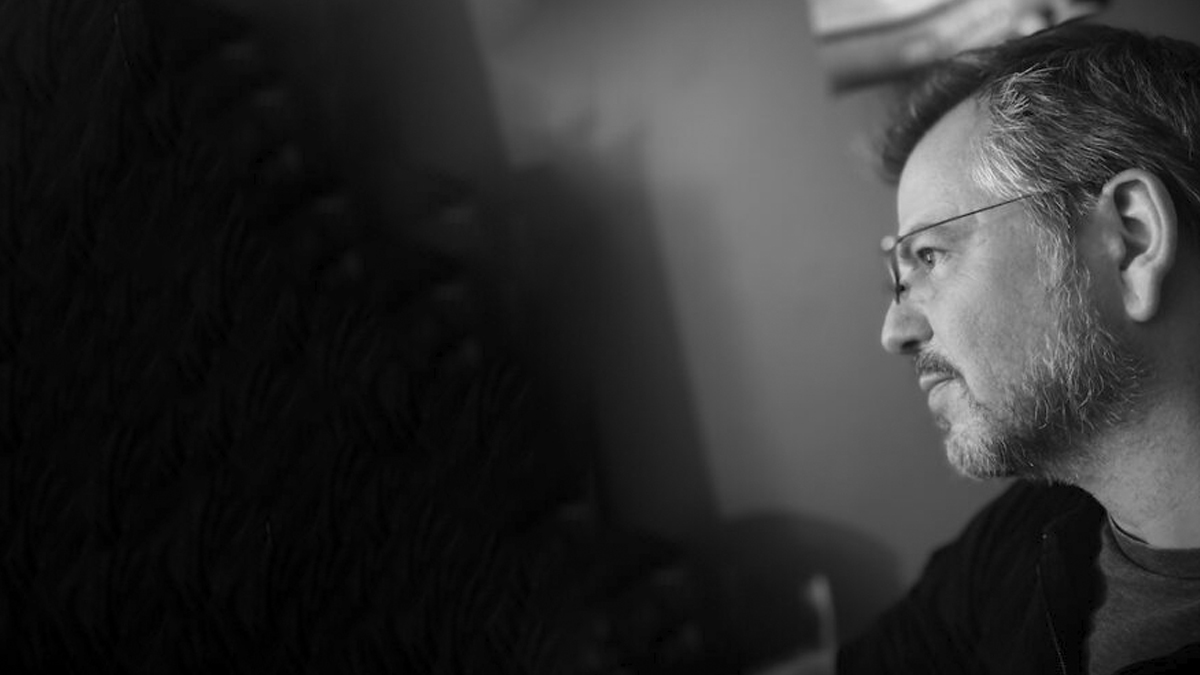
Kenneth Kirschner es un compositor de música experimental radicado en Nueva York que ha estado trabajando en la intersección de la composición clásica de vanguardia y la música electrónica contemporánea. Está activo desde la década de los ’80 con más de 40 discos lanzados en los sellos Sub Rosa, 12k, Room40, Leerraum, Line y Greyfade, por nombrar algunos.
Kirschner trabaja en el campo de la tecnología musical de avanzada, explorando técnicas algorítmicas, generativas y aleatorias dentro del ámbito de la música digital, manteniendo los aspectos básicos musicales como la armonía, ritmo, estructura, forma y belleza.
Consciente de los ideales del movimiento Cyberpunk de finales de los ’80, Kirschner disponibiliza su música en su sitio web kennethkirschner.com para quienes estén interesados, como para los artistas que deseen usar el material bruto, en sus propios proyectos.
Kirschner ha colaborado con músicos y artistas de distintos medios, destacando la serie «Post_Piano” (12k) junto a Taylor Deupree, la serie “Variant” de aplicaciones e instalaciones audiovisuales con el visualista Joshue Ott y su continuo trabajo colaborativo con Joseph Branciforte del sello Greyfade, adentrándose más allá de las fronteras de la música de cámara, junto a la más avanzada tecnología digital.
Con “Three Cellos”, Kirschner inaugura una nueva fase de los lanzamientos de Greyfade: El formato FOLIO; un libro de tapa dura más una descarga de álbum digital en alta resolución. El libro describe todo el proceso creativo de “Three Cellos”.
“Three Cellos” es una composición digital que Kirschner creó el 8 de julio de 2017 y que contó con la participación del arreglista y productor Joseph Branciforte, el violonchelista Christopher Gross y el propio Kirschner.
Esta obra de carácter minimalista que consiste en diez piezas que despliegan melancólicas y austeras melodías que se sienten conmovedoras.
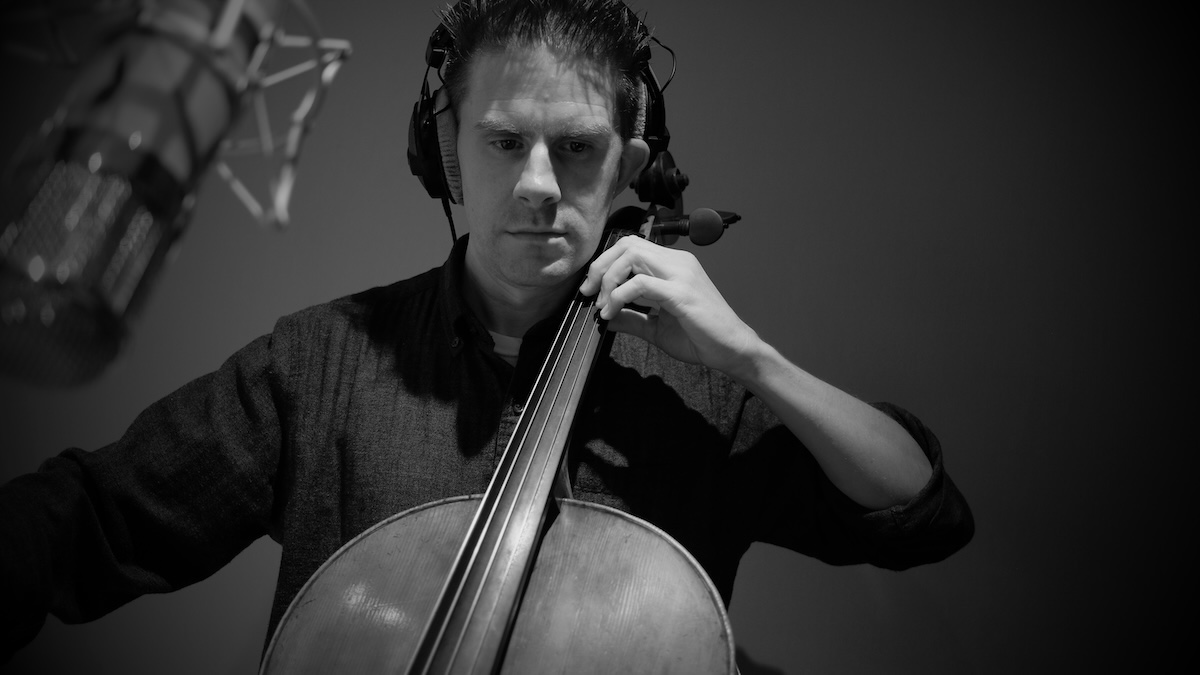
¿Cómo describirías tu composición musical cuando comenzaste a principios de los 80?
“Empecé a escribir canciones pop esencialmente instrumentales, ¡instrumentales porque no sabía cantar! Y yo mismo tocaba todas las partes superponiendo todo en una vieja grabadora de 4 pistas. Todavía conservo muchas de esas grabaciones antiguas y realmente no recomiendo a nadie que las escuche. De vez en cuando, superaba los límites de la forma de la canción y terminaba con algo que sonaba a techno minimalista temprano o música de cámara barroca falsa. Pero los principales referentes fueron realmente la new wave ochentera y la música incidental de Miami Vice, que por cierto es una increíble”.
“Three Cellos” comenzó como tu composición digital (8 de julio de 2017) que ahora se transforma en una adaptación acústica, después de cinco años de trabajo colaborativo entre el arreglista y productor Joseph Branciforte, el violonchelista Christopher Gross y tú. ¿Qué destacarías de este proceso?
“¡Ha sido un largo camino! Y esa es en gran medida la historia que trato de contar en el libro FOLIO: los altibajos, los desafíos y obstáculos, los momentos de desesperación, y luego esos momentos en los que todo encajó en su lugar, cuando las cosas hicieron clic, cobraron sentido y avanzaron. Un proyecto ambicioso como este es largo y difícil y eso no es algo que se note inmediatamente cuando le das al play a la grabación terminada. Entonces, para mí, una buena parte del libro intenta comunicar al oyente más informal, un poco de lo mucho que implica un proyecto desafiante a largo plazo como este”.
Cuéntenos qué les impulsó a Joseph Branciforte y a ti, a investigar y desarrollar la integración entre la composición digital y la música de cámara instrumental?
“Mi interés siempre ha sido encontrar música que se pueda escribir hoy y que tal vez no se haya podido escribir en el pasado. Y eso a menudo se convierte en una cuestión de tecnología, porque es posible que los tipos de música que se pueden escribir con software sean diferentes de los que se podrían escribir con un clavecín, o con papel de pentagrama, o un ensamble vocal o una orquesta de percusión. Eso no quiere decir que una forma de escribir sea mejor o peor; estoy muy interesado en las diferencias. Pero siempre he creído que las herramientas digitales actuales nos brindan un nuevo territorio para explorar y, con suerte, en algún lugar hay música que aún no se ha descubierto”.
En el libro FOLIO sostienes que tu forma de trabajar hoy es similar a la que tenías en los años 80. Me permito preguntarte esto, porque hoy la tecnología musical es bastante diferente a la de hace 40 años. ¿Podrías explicar esta similitud?
“Lo mismo es escuchar. Siempre he sido alguien que escribe “de oído” en lugar de teoría o imaginación, y primero tengo que escuchar música para entenderla. Cuando comencé, se trataba de tocar viejos sintetizadores analógicos y superponer cosas en una cinta, y eso era en gran medida un proceso de escucha, escuchar lo que estás haciendo y evaluando, respondiendo y adaptando instantáneamente. Es táctil e inmediato. Y así es todavía como escribo y pienso, pero ahora con computadoras rápidas y bibliotecas de sonido masivas que habrían colapsado miles de mis samplers de los ‘80. Entonces, aunque la tecnología haya cambiado, la actitud sigue siendo la misma: experimentas, escuchas, te adaptas. Hay un loop de retroalimentación entre un sonido inmediatamente presente y la forma que le estás dando y lo que permanece constante es una dependencia total de una escucha atenta y activa. Si me quedara sordo, estaría acabado; No habría nada más que pudiera hacer, porque para mí, componer es en realidad sólo una forma intensificada de escuchar”.
Me ha llamado la atención la transparencia con la que relatas en el libro (al que llamas “libro de cocina”) tu proceso de trabajo y tus experiencias en el mismo. Y de esta manera poner tu aprendizaje a disposición para que otros artistas también puedan aprender de él. ¿Qué te enseña esta forma de compartir?
“No estoy usando ninguna fórmula secreta para crear mi música, ni códigos ocultos ni técnicas registradas. Crear mi música requiere mucho trabajo duro, pero en cierto nivel todo me parece fácil: directo, simple, obvio. ¡No puedo imaginar por qué no todos lo hacen! Pero es posible que a lo largo de los años haya aprendido un par de cosas: que haya aprendido algunos pequeños trucos o técnicas que podrían ser útiles para alguien que quiera continuar por el mismo camino. Y no entiendo por qué no querrías compartir eso”.
En relación con la pregunta anterior y con el espíritu de compartir, también pones tu música a disposición en tu sitio web kennethkirschner.com, para aquellos que estén interesados y para los artistas que quieran utilizar esta materia prima. ¿Cómo surge esta motivación?
“Comencé mi vida artística en medio del movimiento ciberpunk de finales de los ‘80, y había una sensación de que las nuevas tecnologías de la información – lo que aún no se llamaba ‘Internet’ – podrían ser una fuerza para un cambio positivo y nuevas posibilidades artísticas. Había un espíritu de compartir y apertura que tuvo un gran impacto en mí: un verdadero sentido de idealismo. ¡Por supuesto, todo resultó ser un desastre! Basta con mirar el largo y triste camino desde aquellos ideales ciberpunk, pasando por los primeros días de Napster de la música digital, hasta el ecosistema corporativo en el que ahora estamos atrapados. E incluso se puede argumentar que fue el tonto idealismo de personas como yo, aquellos que quieren que la música sea ‘gratuita’, eso nos ayudó a llegar hasta aquí. Pero a pesar de este mundo terrible en el que vivimos, sigo haciendo lo mío, por más desesperado o loco que parezca; de alguna manera soy incapaz de renunciar a esa ingenua esperanza de que es posible un futuro mejor. Y ahora, por supuesto, soy demasiado mayor para cambiar”.
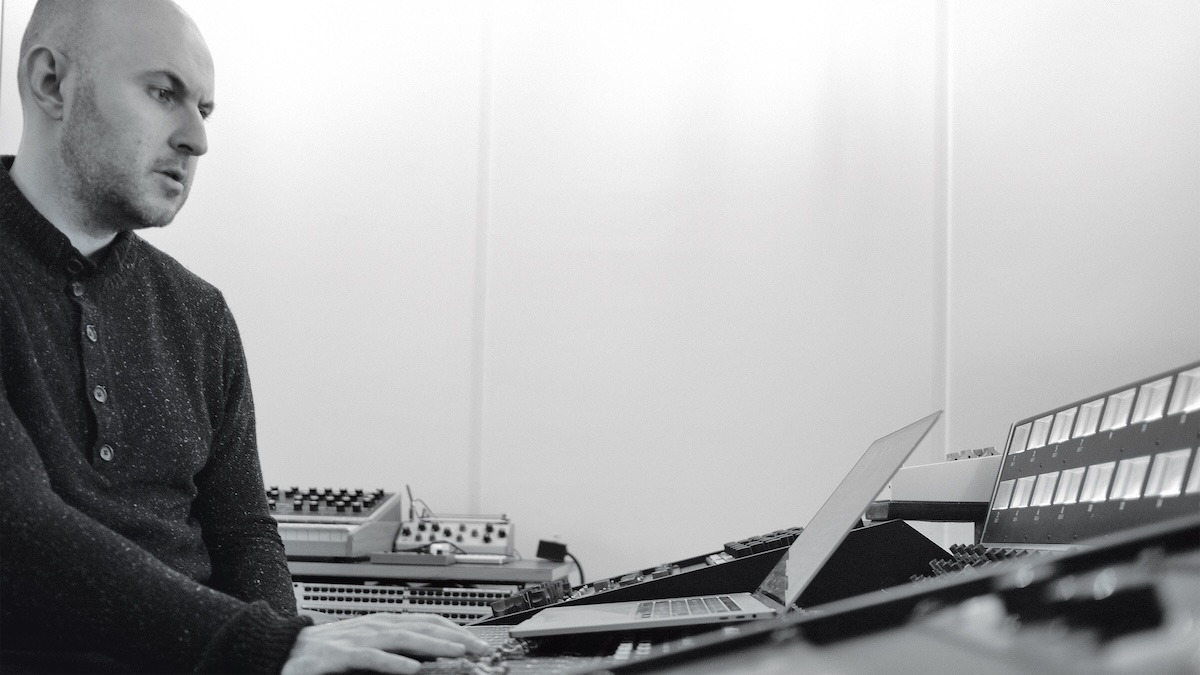
¿Podrías contarnos sobre tus próximos proyectos?
“He estado trabajando durante el último año en un cuarteto de cuerdas, o tal vez “cuarteto de cuerdas”. Es lo opuesto a ‘Three Cellos’, en el sentido de que soy yo de vuelta a mis viejas costumbres electrónicas, trabajando con samples. Pero me atengo a la estructura de un cuarteto de cuerdas (los instrumentos, los rangos, los sonidos) porque considero que es un conjunto útil de limitaciones. La cuestión es larga, no tan terrible como esa reciente pieza para piano (27 de julio de 2022, lanzada el año pasado en 12k), pero realmente, dolorosamente larga. Es extraña pero sutilmente microtonal y consta de miles y miles de acordes desconectados, ninguno de los cuales se repite. De alguna manera extraña, es una pieza que he querido escribir durante mucho tiempo y espero finalmente estar listo para escribirla”.
Kenneth Kirschner is a New York-based experimental music composer who has been working at the intersection of avant-garde classical composition and contemporary electronic music. He has been active since the 1980s with over 40 albums released on the labels Sub Rosa, 12k, Room40, Leerraum, Line and Greyfade, to name a few.
Kirschner works in the field of advanced music technology, exploring algorithmic, generative, and random techniques within the realm of digital music, maintaining musical basics such as harmony, rhythm, structure, form and beauty.
Aware of the ideals of the Cyberpunk movement of the late ’80s, Kirschner makes his music available on his website kennethkirschner.com for those who are interested, as well as for artists who wish to use the raw material in their own projects.
Kirschner has collaborated with musicians and artists of different mediums, highlighting the “Post_Piano” series (12k) with Taylor Deupree, the «Variant» series of audiovisual applications and installations with visualist Joshua Ott and his continued collaborative work with Greyfade founding member, Joseph Branciforte, going beyond the borders of chamber music, together with the most advanced digital technology.
With “Three Cellos”, Kirschner inaugurates a new phase of Greyfade releases: The FOLIO format; a hardcover book plus a high-resolution digital album download. The book describes the entire creative process of “Three Cellos”.
“Three Cellos” is a digital composition that Kirschner created on July 8, 2017, with the participation of arranger and producer Joseph Branciforte, cellist Christopher Gross and Kirschner himself.
This minimalist oeuvre consists of ten pieces that display melancholic and austere melodies that feel poignant.
How would you describe your music composition when you started in the early 80s?
“I started out writing what were essentially instrumental pop songs – instrumental because I couldn’t sing! And I’d play all the parts myself by layering everything on an old 4-track recorder. I still have lots of those old recordings today, and I don’t really recommend anyone listen to them. Occasionally I’d push up against the limits of song form and end up with something that sounded like early minimal techno or fake Baroque chamber music. But the main referents were really 80s new wave and the incidental music to Miami Vice, which by the way is awesome.”
“Three Cellos” began as your digital composition (July 8, 2017) that is now transformed into an acoustic adaptation, after five years of collaborative work between arranger and producer Joseph Branciforte, cellist Christopher Gross and you. What would you highlight about this process?
“It’s been a long road! And that’s very much the story I try to tell in the FOLIO book: the ups and downs, the challenges and roadblocks, the moments of despair – and then those moments when everything snapped into place, when things clicked and made sense and moved forward. An ambitious project like this is long and hard, and that’s not something that’s immediately apparent when you just hit play on the finished recording. So, for me a big part of the book is about trying to communicate to the more casual listener just a little of how much goes into a challenging long-term project like this.”
Please tell us what drives you and Joseph Branciforte to research and develop the integration between digital composition and instrumental chamber music?
“My interest has always been in finding the music that can be written today that couldn’t, perhaps, have been written in the past. And that often becomes a question of technology, because it’s possible that the kinds of music you can write with software might be different from what could be written with a harpsichord, or with staff paper, or a vocal ensemble or percussion orchestra. That’s not to say that any one way of writing is better or worse – I’m very much interested in the differences. But my belief has always been that today’s digital tools do give us some new territory to explore, and hopefully somewhere out there is music that hasn’t yet been discovered.”
In the FOLIO book you argue that your way of working today is similar to what you had in the 80s. I allow myself to ask you this, because today musical technology is quite different from 40 years ago. Could you please explain this similarity?
“What’s the same is listening. I’ve always been someone who writes “by ear” rather than theory or imagination, and I have to hear music first to understand it. When I was first getting started, this was about playing old analog synthesizers and layering things onto tape – and that was very much a process of listening, of hearing what you’re doing and instantly evaluating and responding and adapting. It’s tactile and immediate. And that’s still how I write and think – but now with fast computers and massive sound libraries that would have crashed a thousand of my 80s samplers. So, while the tech has changed, the attitude remains the same: you experiment, you listen, you adjust. There’s a feedback loop between an immediately present sound and your shaping of it, and what remains constant is a total dependence on careful, active listening. If I went deaf, I’d be done; there would be nothing else I could do – because for me, composing is really just a heightened form of listening.”
I was favorably struck by the transparency with which you recount in the book (which you call a “cookbook”) your working process and experiences in it. And in this way make your learning available so other artists can also learn from it. What does this way of sharing teach you?
“There’s no secret formula I’m using to create my music, no hidden code or trademarked techniques. Creating my music is a lot of hard work, but at some level it all seems easy to me – straightforward, simple, obvious. I can’t imagine why everyone doesn’t do it! But it’s possible that over the years I’ve actually learned a thing or two – that I’ve picked up a few little tricks or techniques that might be helpful to someone who wants to continue down that same path. And I don’t understand why you wouldn’t want to share that.”
In relation to the previous question, and in the spirit of sharing, you also make your music available on your website kennethkirschner.com, for those who are interested in and for the artists who want to use this raw material. How does this motivation come about?
“I started out my artistic life amidst the cyberpunk movement of the late 80s, and there was a sense that the new information technologies – what wasn’t even yet called ‘the Internet’ – could be a force for positive change and new artistic possibility. There was an ethos of sharing and openness that had a huge impact on me – a real sense of idealism. Of course, it all turned out to be a disaster! Just look at the long, sad path from those cyberpunk ideals, through digital music’s early Napster days, to the corporate ecosystem we’re now trapped in. And you can even argue that it was the foolish idealism of people like me – those wanting music to be ‘free’ – that helped lead us here. But despite this terrible world we live in, I keep doing my thing, however hopeless or crazy it seems; I’m somehow unable to give up that naive hope that a better future is possible. And now I’m of course too old to change.”
Could you tell us about your upcoming projects?
“I’ve been working for the last year on a string quartet, or perhaps ‘string quartet.’ It’s the opposite of ‘Three Cellos,’ in that it’s me back in my old electronic ways, working with samples. But I’m sticking to the structure of a string quartet – the instruments, the ranges, the sounds – because I find it to be a useful set of constraints. The thing is long – not quite as terrible as that recent piano piece (July 27, 2022, released last year on 12k), but really, painfully long. It’s weirdly but subtly microtonal, and consists of thousands and thousands of disconnected chords, none of which repeat. In some strange way, it’s a piece I’ve wanted to write for a long time – and hopefully I’m finally ready to write it.”
